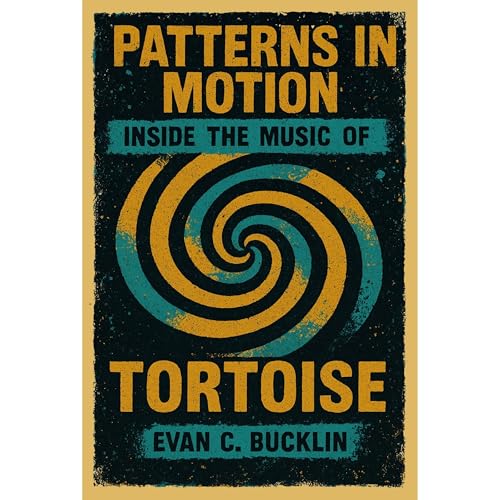
Patterns in Motion: Inside the Music of Tortoise
A Definitive History of the Band, Post-Rock Innovation, and the Evolution of Instrumental Rock from the 1990s to Today
No se pudo agregar al carrito
Add to Cart failed.
Error al Agregar a Lista de Deseos.
Error al eliminar de la lista de deseos.
Error al añadir a tu biblioteca
Error al seguir el podcast
Error al dejar de seguir el podcast
$0.00 por los primeros 30 días
Compra ahora por $6.99
-
Narrado por:
-
Virtual Voice
-
De:
-
Evan C. Bucklin

Este título utiliza narración de voz virtual
In the early 1990s, Chicago was not the obvious birthplace for a revolution in rock music. Yet from rehearsal lofts, modest clubs, and fiercely independent labels emerged Tortoise, a collective that transformed how instrumental music could be written, performed, and heard. Patterns in Motion traces this unlikely story in full detail, following the band from their first basement sessions to international acclaim.
Drawing from Chicago’s hybrid scene—where jazz improvisers collided with punk drummers, dub bass lines shook underground venues, and minimalist composers found unlikely allies in indie circles—Tortoise redefined what a rock band could be. They placed rhythm and texture at the center, displaced the singer, and treated the studio as an instrument in itself. Their 1994 debut startled critics, but it was the 1996 landmark Millions Now Living Will Never Die that shifted the global conversation, proving that instrumental rock could be expansive, cerebral, and emotionally resonant.
This book examines each chapter of their career: the role of Doug McCombs in reshaping the bass as narrative instrument, John McEntire’s pioneering use of the studio as compositional tool, and the band’s commitment to collectivism in a culture obsessed with frontmen. It also situates Tortoise within broader currents—independent label economies, Chicago’s AACM jazz lineage, European Krautrock traditions, and the rise of remix culture in the 2000s. Each album, from Tortoise (1994) to The Catastrophist (2016), is treated in depth, revealing the creative tensions, collaborations, and innovations that sustained the group over decades.
Far from a nostalgia project, this book demonstrates how Tortoise influenced genres worldwide, inspiring bands from Mogwai to Explosions in the Sky, shaping Japanese post-rock collectives, and infiltrating electronic and jazz scenes alike. It also engages with the debates their music provoked: the meaning of “post-rock,” the politics of independence, and the enduring role of innovation in a globalized music industry.
Written in vivid, accessible prose, Patterns in Motion offers both rigorous analysis and compelling storytelling. It captures not only the sound of a band but the city that made them possible, and the global currents they helped unleash. For fans of experimental music, cultural history, and the ever-shifting landscape of rock, this is the definitive chronicle of a group that proved innovation need not be loud to be radical.



